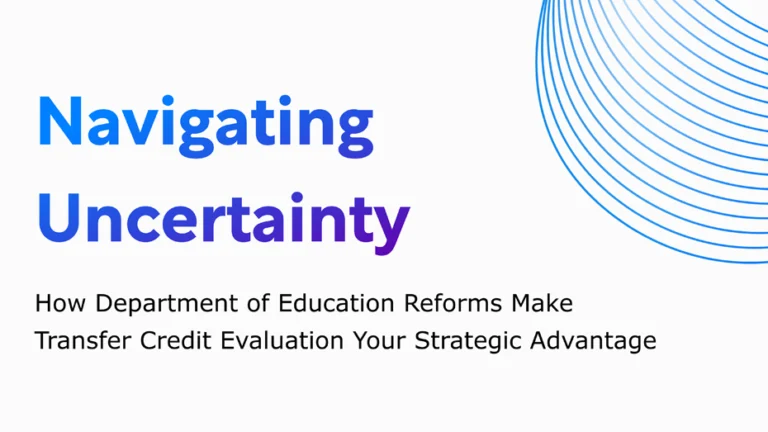AACRAO quotes Dr. Jacquelyn Elliot, VP of Enrollment at a private liberal arts college and a specialist in boosting collaboration amongst higher ed teams. “Why is it so hard for people to see the big picture? We have to work together [to impact enrollment], not hold onto our own agendas.”
Higher Ed has always relied on what they call “cross-functional teams,” “communities of practice,” or what Gartner refers to as “fusion teams.” EDUCAUSE views communities of practice, or CoPs, as a means to link nodes in different networks to forge new connections. These groups rally creative minds from all over campus into a multi-talented dynamo of fresh ideas and strategies.
What is a community of practice?
Google knows the power of inspired groups taking on non-prescribed moonshots. The tech giant doesn’t gently nudge employees to explore new areas of interest—they openly urge them to. After all, Google Maps and Slack were born on the periphery of a typical day’s work. Arguably the first forays into iPhone were pioneered by an industrious few, a fledgling concept that higher-ups didn’t think could sprout any wings.
A community of practice takes on this more creative approach to future gazing. It democratizes digital transformation, inviting a broad, motivated set of employees to explore the potential of new technologies.
In higher ed, these unlikely matchups engage with one another to find the best approach to novel issues. You might find them exploring issues like:
- Staff members from space planning, construction, and IT devise the best plan to outfit hundreds of classrooms with updated AV equipment
- Marketing, enrollment, and a group of professors come together to develop a digital campaign targeted at recruiting students interested in a specific major
- A team of residential life staffers, web designers, and student health professionals meet to identify new ways to support the mental health of virtual learners
CoPs are rooted in collaboration and sharing. Every team member brings their personal and departmental experiences to the table. Participants are encouraged to test smaller ideas that may not be buttressed by a traditional bullet-pointed initiative. Silos come down, learning diffuses over a broader group and sparks new approaches to digital transformation efforts.
Where can you find these all-stars ready to take the helm of tomorrow’s technologies?
Gartner calls them “business technologists,” and they make up 41% of the workforce. Some higher ed experts merge “functional” and “technology” into the playful moniker “funky-techs.”
Who are they? They’re go-getters and innate strategists. They might be outside the IT realm but are interested in working with the latest tech. Whether they share a passion, curiosity, or sheer allegiance to the institution’s future growth, uncommon groups emit an unexpected fervency that can make big changes at your institution.
In many departments, only a handful of staffers want to push all-speed ahead on new tech initiatives.
Others are happy with the status quo.
They don’t want to learn new systems or let go of the power associated with being the sole person who knows how to get it done. Begrudgingly, fresh ideas fade away.
Fusion teams push new ideas to thrive. They bring together talented, future-focused individuals from all areas of the university into one motivated powerhouse undeterred by cynics. Fusion teams unleash great ideas from untapped pockets and etch them into the fabric of your institution.
8 things your higher ed communities of practice need to succeed
Transformation can only exist where ideas are exchanged in new ways, and employees feel free to explore areas outside their expertise. Here are eight ways you can foster learning communities and unearth brilliant ideas from new sources.
- Informed but informal: Fusion teams need specific objectives and targets, but a loose, more creative discussion environment is preferred. Identify a focus area like how technology can boost student well-being or accelerate tasks heavy in data entry. But, allow participants to explore creative solutions outside the bounds of their everyday work structure.
- Promote involvement: Certain managers may view this broad-range collaboration as off-topic and might discourage participation. To avoid this pitfall, appoint a “sponsor” from senior leadership. This person should encourage participation so team members know it’s a valued creative center of the institution. And if the boss “says it’s okay,” people will fret less about taking time out of their already busy day to help grow this budding seedbed of ideas.
- But don’t reward participants: These groups are not for earning extra brownie points. Team members should not expect to receive perks or performance bumps for attending. It might sound counter-intuitive, but openly offering benefits invites employees with motivations other than change.
- Cast a wide net: Some people don’t join brainstorming groups simply because they don’t know they exist. Advertise new CoPs to every department and employee level—even those outside your normal peer group. Communities that consist of a single team are just another meeting and miss the point of cross-collaboration.
- Limit subject matter experts: The purpose of a CoP is learning. Subject matter experts who tend to espouse their knowledge and block others from asking elementary questions are a no-no. Some team members may join with low technical skills but boundless energy and enthusiasm for generating change. These workers should feel empowered to ask questions and spread their wings into new areas.
- [➡️ This one is a must-have] Use business process automation tools: To sync the efforts of multiple departments, highly effective teams turn to business process automation (BPA). BPA tools sequence tasks from all over campus into a single workflow. Robotic technologies like intelligent document processing perform some steps autonomously while steering follow-ups with staffers in charge of approvals or ideation.
- No formal power structures: CoPs shouldn’t involve anyone looking to “run the show.” Devoid of common power structures, great ideas can prosper. While there’s no professional hierarchy enforced, fusion teams need a facilitator to set meetings and keep conversations on point.
- Remember to welcome remote workers: Stovepipe cliques form aggressively in virtual working environments. Without serendipitous hallway encounters or snack room run-ins, we’re more likely to reach out to the co-workers we know. Unknowingly, we miss meeting new staffers that might be overflowing with transformative ideas. A successful CoP includes on-site workers and those working remotely.
With fusion teams and CoPs, you can create new working relationships, unlock innovative insights, and reveal connections that otherwise wouldn’t exist. A CoP unites the cross-campus brain power you need to generate new ideas. Business process automation tools track and fulfill the step-by-step tasks that actually get them off the ground. These two strategies working hand in hand, will turn your institution into a hotbed of actionable, future-focused ideas that stick.





